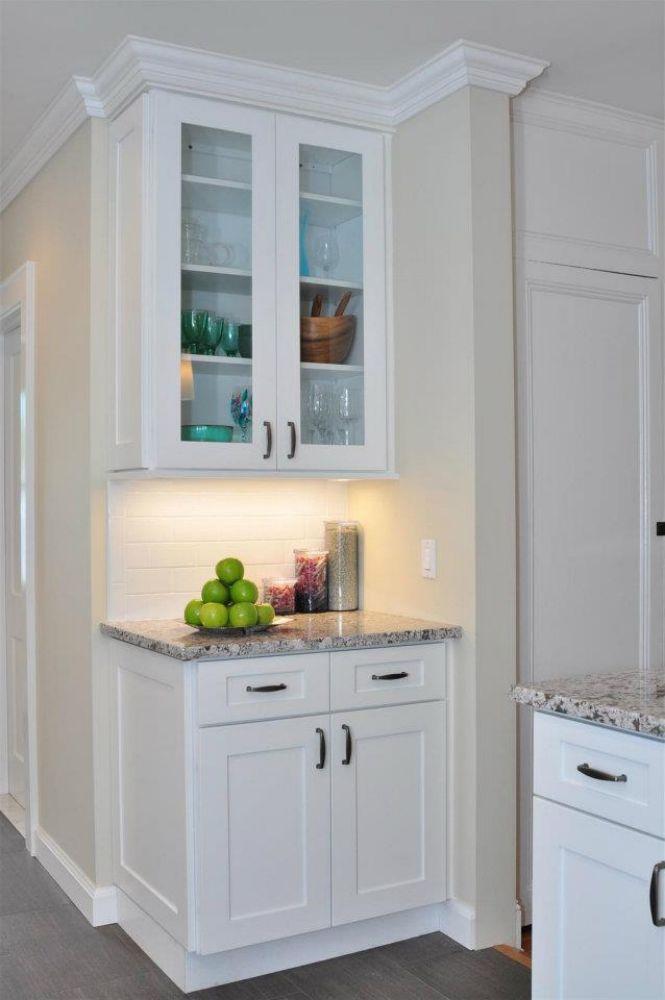Introduction: Mixing Cabinet Styles and Materials
Kitchen design trends increasingly embrace the blended aesthetic, where painted cabinets coexist with natural wood tones. This approach allows homeowners to combine modern and traditional elements, create visual contrast, and highlight focal points such as islands or feature walls.
Forevermark Gramercy White cabinets are known for their bright, clean finish and timeless appeal. A common question among designers and homeowners is whether Gramercy White cabinets can be effectively paired with natural wood cabinetry without clashing in color, style, or finish. This article explores how to achieve a harmonious blend, the design principles involved, and practical tips for installation and maintenance.
Why Blend Cabinetry?
1. Creating Visual Interest
-
Using a combination of white and natural wood cabinets creates contrast and depth, preventing a kitchen from appearing monotonous.
-
Gramercy White cabinets reflect light, while natural wood adds warmth and texture.
2. Highlighting Functional Areas
-
Homeowners often use natural wood cabinets for islands, pantry walls, or open shelving.
-
Gramercy White cabinets can frame cooking zones, storage areas, or upper cabinets, balancing aesthetics with practicality.
3. Flexibility in Style
-
Blended cabinetry allows for transitional design, marrying modern painted cabinets with rustic or classic wood tones.
-
This approach can be adapted to contemporary, farmhouse, or even eclectic kitchens.
Choosing the Right Wood Tone
1. Complementary vs. Contrasting
-
Light wood tones (maple, oak, birch) pair seamlessly with Gramercy White, creating a subtle contrast.
-
Darker woods (walnut, cherry) provide a dramatic effect and can serve as a striking focal point.
2. Matching Undertones
-
Pay attention to undertones in the wood and the white paint. Gramercy White has neutral undertones, making it compatible with warm or cool woods.
-
Avoid pairing with wood that has red or yellow undertones if you desire a more subtle, cohesive look.
3. Finishing and Texture
-
Matte or satin finishes in natural wood complement the smooth, painted finish of Gramercy White cabinets.
-
Glossy or heavily textured woods may create visual tension unless carefully balanced.
Design Principles for Successful Blending
1. Placement and Distribution
-
Place Gramercy White cabinets along walls or upper areas to maximize light reflection and open up space.
-
Use natural wood cabinetry on islands, lower cabinets, or shelving units to anchor the design and provide warmth.
2. Consistent Hardware
-
Use similar hardware finishes across both cabinet types to create visual cohesion.
-
Soft-close hinges and drawer slides should match in performance and style, ensuring functionality and uniformity.
3. Balance Color and Scale
-
Avoid overloading the kitchen with too much wood or too much white; aim for a balanced distribution.
-
Consider proportions: for a small kitchen, predominantly Gramercy White cabinets with selective wood accents prevent the space from feeling heavy.
Practical Considerations
1. Installation and Fit
-
Ensure that cabinets from both materials align perfectly in height and depth for seamless integration.
-
Custom sizing may be required when blending cabinet types, especially for islands or corner units.
2. Maintenance
-
Gramercy White cabinets are easy to clean with mild solutions.
-
Natural wood cabinets require periodic polishing or sealing to maintain their appearance.
-
Coordinating cleaning routines ensures both materials age gracefully together.
3. Durability and Moisture Resistance
-
Gramercy White cabinets resist moisture and stains, making them ideal for high-use areas.
-
Natural wood cabinets should be properly sealed to prevent warping or discoloration, especially near sinks or cooking zones.
Design Examples
1. Modern Farmhouse
-
Upper cabinets in Gramercy White with lower cabinets or islands in reclaimed oak create a cozy yet contemporary kitchen.
2. Transitional Kitchen
-
Gramercy White framing walls and upper storage paired with medium-tone maple or cherry island cabinetry offers elegance with warmth.
3. High-Contrast Statement
-
Use dark walnut or espresso cabinetry for lower units with Gramercy White walls and upper cabinets for a striking visual impact.
Color Coordination Tips
-
Test samples of Gramercy White against wood swatches under natural and artificial light.
-
Consider countertop and backsplash colors that unify both cabinet types.
-
Use accent pieces, like open shelves, to visually tie the two materials together.
-
Incorporate lighting strategically to highlight contrast without overwhelming the space.
Blending Styles Beyond Cabinets
-
Flooring: Wood or neutral-toned floors help integrate Gramercy White with natural wood cabinetry.
-
Hardware: Brushed nickel, bronze, or matte black can create a bridge between painted and wood surfaces.
-
Accessories: Wooden cutting boards, white ceramics, and natural fabrics reinforce the blended theme.
Long-Term Considerations
-
Consistent cleaning, sealing, and preventive maintenance maintain the finish and color of both Gramercy White and natural wood cabinets.
-
Over time, minor color shifts in wood are natural; Gramercy White’s neutral tone helps maintain overall visual harmony.
-
A well-blended kitchen can enhance resale value, offering a design that is both timeless and versatile.
Conclusion
Blending Forevermark Gramercy White cabinets with natural wood cabinetry is not only possible but can produce a highly appealing and functional kitchen design. By paying attention to wood tone, placement, proportion, and finishing, homeowners can achieve a harmonious balance that combines the crisp brightness of Gramercy White with the warmth and texture of natural wood.
With proper planning, installation, and maintenance, a blended cabinetry approach allows for creativity, versatility, and durability, making it an ideal choice for both modern and traditional kitchens.
Frequently Asked Questions
Q1: Can I mix Gramercy White with any type of wood?
A: Yes, but neutral or complementary wood tones work best. Consider undertones and finish to ensure visual harmony.
Q2: Should hardware match across painted and wood cabinets?
A: Yes, consistent hardware finishes unify the design and maintain functionality.
Q3: How do I maintain both types of cabinets?
A: Clean Gramercy White cabinets with mild solutions and regularly polish or seal natural wood cabinets to preserve their finish.
Q4: Can I use dark wood with Gramercy White without overwhelming the space?
A: Yes, balance placement and proportion. Using dark wood for lower cabinets or islands while keeping walls and upper cabinets white creates contrast without heaviness.
Q5: Does blending affect installation difficulty?
A: Slightly. Proper alignment, custom sizing, and careful planning are needed to ensure a seamless integration of both materials.

